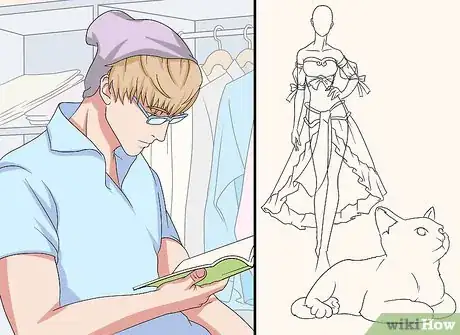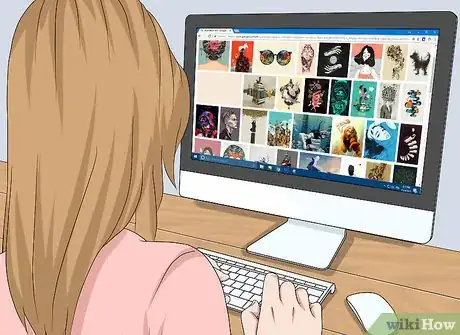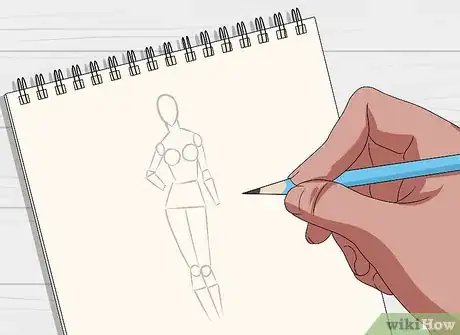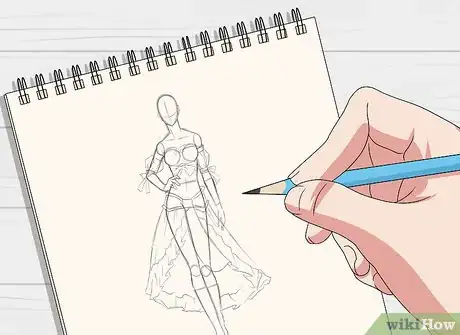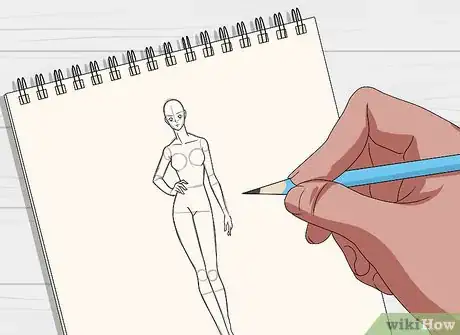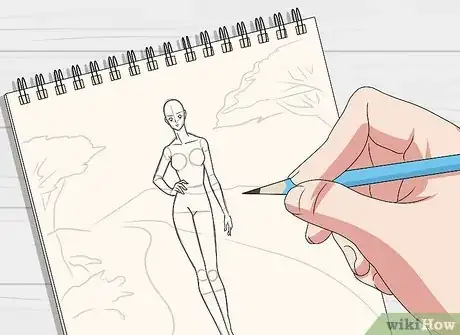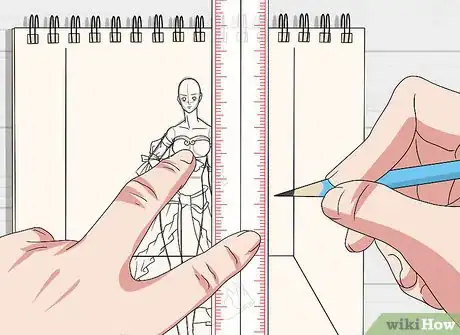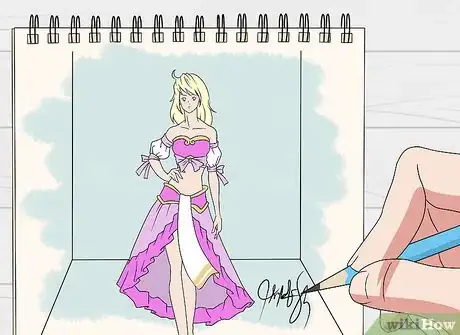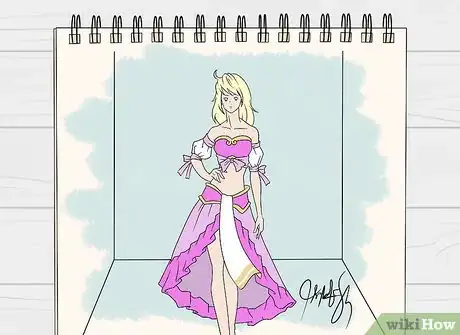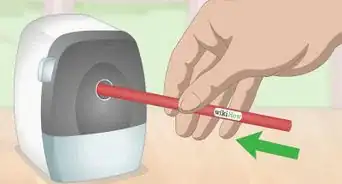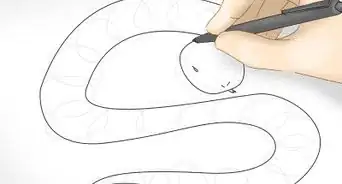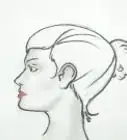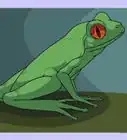X
This article was co-authored by Kathy Leader. Kathy Leader is an Artist and the Owner of The Art Process. With more than 36 years of art education experience, she specializes in providing mixed media art workshops for individuals and groups. In addition, she works with businesses and organizations to build morale, encourage creative problem solving, and find de-stressing tools. Kathy holds a BFA in Art Education from The University of Cape Town.
This article has been viewed 119,936 times.
Drawing from your imagination may seem hard, as you cannot actually see what you are thinking of, but you are not alone. This wikiHow will show you how to draw from your imagination.
Steps
-
1Think of an interesting subject that would look quite realistic. Perhaps you would like to draw an animal. If you are not sure which animal to choose, you could look up animals in an encyclopedia, to get some ideas. Or maybe you would like to draw a fantasy character. Again, if you are at a loss for what to draw, read some fairy tales, as these are rich in suggestions.
- Go outside for a walk. Take your phone with you and imagine you're an insect crawling around the leaves. Take close-up images of the bugs and the twigs, leaves, flower petals and grass blades they're walking on and flying around. Remember to snap any textures you find appealing. You can then use these images as idea prompts for your art. For example, you can draw a portion of a plant or a flower, and using the photo as a reference guide, imagine yourself as an insect crawling around the shapes as you draw them.
-
2Be inspired. If you don't have any ideas, look at other people’s art for ideas. Look for things you might want to try, see what techniques they use, or just say, "I can do that!"
- Be inspired but don't copy. It's important that you develop your own style and draw deeply upon your imagination to develop your drawings.
Advertisement -
3Start with using basic shapes then start adding more detail.
- Draw slowly and meditatively. This isn't a competition or a race. Take your time to see what develops.
-
4Do a rough draft. At first do your picture lightly with a pencil so you don't see the mistakes, and when you're happy with the picture, darken the lines or ink it.
-
5Draw every detail needed in your picture so you could see that it looks realistic. If your subject is a clown, be sure to draw some eyes and ears that look clownish. If your subject is a toaster, look at a toaster and try to zero in on the essential details, so that you can draw them. You will probably want slots for the bread, and some controls for turning on the toaster.
-
6Sketch in an environment. Think about what your character or other subject would inhabit. For example, if your subject is a cow, you could draw a barn, or a field. If your subject is a space alien, draw a distant planet. If your subject is a box of cereal, draw the breakfast table, or the inside of a kitchen cupboard.
-
7Put some clothes on your character. Perhaps a lovely dress for a princess, or a sports uniform for a ball player.
-
8Make a line in between the walls so there will be equal to three walls.
-
9Sign your name and write your age at the bottom and make it the size that it's not too big and not too small.
-
10Finished.
Advertisement
Community Q&A
-
QuestionHow can I improve my drawing skills?
 Community AnswerIf you're interested in learning to draw anything specific, like landscapes or horses, you can look for YouTube tutorials. This article may have some more useful tips for you: how to improve your drawing skills.
Community AnswerIf you're interested in learning to draw anything specific, like landscapes or horses, you can look for YouTube tutorials. This article may have some more useful tips for you: how to improve your drawing skills. -
QuestionHow can I get original drawing ideas? My imagination is clogged with Disney.
 Community AnswerStart brainstorming on your own personal interests. If you, for instance, like sports, maybe drawing out your favorite team's logo is a good place to start generating ideas. From there, personalize it and add your own touches. As long as it's creative, then it's original.
Community AnswerStart brainstorming on your own personal interests. If you, for instance, like sports, maybe drawing out your favorite team's logo is a good place to start generating ideas. From there, personalize it and add your own touches. As long as it's creative, then it's original. -
QuestionWhat are some examples of imaginary drawings?
 Community AnswerAliens eating ice cream, giraffes dancing on rainbows, a ballerina dancing hip-hop on stage, etc. Even if the idea is crazy or absurd, if you like it, you should draw it!
Community AnswerAliens eating ice cream, giraffes dancing on rainbows, a ballerina dancing hip-hop on stage, etc. Even if the idea is crazy or absurd, if you like it, you should draw it!
Advertisement
Things You'll Need
- A big piece of paper
- Coloring pencils
- Photos and colored paper
About This Article
Advertisement
